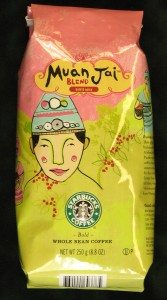
Most people don’t know that there are many Starbucks coffees NOT sold inside Starbucks in the United States or Canada. These rare international whole bean coffees are usually only sold in the originating country where their beans are sourced (or mostly sourced in). So for example, if you’re in Brazil and visiting a Starbucks, you’d have the chance to buy Brasil Blend Starbucks Coffee. Brasil blend coffee sources beans from 4 different (or maybe it’s 3?) coffee farms in Brazil, with beans produced by each various processing type: Wash, semi-washed, and sun-dried. (I realize at some point I should do a blog post about these various processing methods.)
Starbucks sources the beans from the home country, and then ships them to Seattle for quality control and coffee cupping. The beans are roasted at the Kent Roasting Plant, and then shipped back to the home country. Although Hawaii is part of the the United States, I count “100% Kona” coffee which is sold year-round at Starbucks in Hawaii, as part of the international blends, but reasonable minds could differ on that one!
I don’t have a complete list of the international blends, nor do I have images for all the coffees. I think I need to travel more. Periodically, the “street level” Starbucks stores receive very small quantities of these rare international coffees, which is how I’ve experienced having some of these. The Clover Starbucks locations have periodically offered 100% Kona, which by the way, rocks in the Clover. Once in a while, I’ve picked up some of these coffees at 15th Avenue Coffee and Tea, and they’re also available at Roy Street Coffee and Tea. Some of the international beans available are as follows:
- Brazil – Brasil Blend Starbucks Coffee
- China – South of the Clouds Starbucks Coffee
- Hawaii – 100% Kona Coffee
- Mexico – Mexico Blend
- Puerto Rico – Puerto Rico Starbucks Coffee
- Philippines – Starbucks Kape Vinta Blend
- Thailand – Muan Jai Starbucks Coffee
I don’t have a lot of information about these rare coffees and would welcome any more photographs or further information on these special “international” blend coffees sold only in very limited locations and countries. Please email me at Sbux206@StarbucksMelody.com if you have anything to add to this blog post.
The “Brasil” blend coffee offering is not the same coffee as Starbucks Brazil Ipanema Bourbon, just to halt any confusion due to the similarity of their names. (However, if you really want to be bewildered by the similarity of coffee names, read my previous blog entry on Pike Place Roast and Pike Place Special Reserve – These are 2 different coffees!). I’ve had the Muan Jai as a pour-over cup of coffee, and it was very bold with distinct peppery notes. Of course, Kona is floral and balanced. The Kona coffee stamp shown below was taken from a random google search of images.
Thank you to Larry at Seattle Custom Framing for his assistance with the photos of the Muan Jai coffee. The copyright holder for the Brasil Blend photo is sbx_ironchef – Photo used by permission.
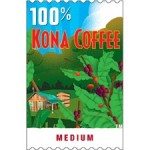
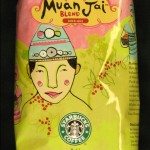
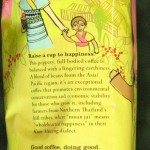
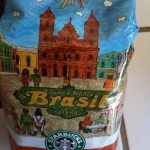
[[Edit on December 6, 2009: A reader writes to me that he is a partner in Australia, and so here’s what he says about international beans in Australia:
I really enjoyed your most recent blog about origin specific whole bean. Our origin specific whole bean here is called ‘Fair Trade Timor Lorosa’e ‘ – since there aren’t any stores in Timor, Indonesia, I’m pretty sure we’re the closest market. Anyway, I think it would taste amazing through the Clover (which we’re yet to get down here). It’s very earthy, but smoother than say, Sumatra or Komodo Dragon Blend. And it’s rare in that it’s an Asia-Pacific coffee that is washed! The best pairing I’ve had with it was chocolate coated roasted almonds – amazing!
What a great insight! I’ve never even heard of Starbucks Timor Lorosa’e coffee! Thank you for emailing me and sharing your coffee knowledge with starbucksmelody.com!]]
Related posts
27 Comments
Leave a Reply Cancel reply
You must be logged in to post a comment.
Sponsors
Recent Comments
- DEVIN on Compostable Straws Land in Seattle Starbucks Stores
- coffeebeanz on Why do you go to Starbucks less often? (If that’s true for you)
- Willi on You can now buy a Siren statue: $6,000
- Willi on A major revamp of your drink recipe: Testing syrup extracts and cane sugar
- Skip on Why do you go to Starbucks less often? (If that’s true for you)






Kauai is another Hawaiian coffee that I don’t think has ever been on the clover menu and is therefore only available in Hawaii. We’ve also had a SO Mexico.
“Muan Jai” – ‘wholehearted happiness’ in a cup – sounds like a good way to start the day!
I love your blog and insight! Thanks, Melody!
I will never see any of these unless I travel! That sux. But at least I know about them. Starbucks Kona coffee? Who knew?
When I was a partner, I used to have a connection in the Coffee Education department. He would send me 1# samples of some interesting coffees. They were usually used for various blends, but a little origin would seep out here and there. It also happened during meetings in Seattle when us folks from the field would come into town as well.
Hi AmandaJ! I completely forgot about the ‘Kauai’ coffee but I recall seeing it at the Street Level Starbucks. Spaced out on that one! What is the international Mexico exclusive bean? Do you know? Thanks for the comment!
Iwish there was a way to order these coffees even if only a small amt were available 😉 And the Kona coffee on the clover sounds dreamy. I think I would pay a little more for these coffes if offered online or even instore! 😀
Dang, I wish there were a way for me to try those international coffees. Especially the Brazil. I can never tell whether I’ll like or dislike a coffee until I taste it. Clover brewing always surprises me & brings out the best of each variety.
I’m not here to win the contest, because I’m up in Canada, but I am here to say that this post was the best yet! I love specialty coffees!
I am StormySK8 on Twitter! 🙂 I didn’t know if you’d see my @ message since you don’t follow me and my Tweets are protected.
the 15th ave st does indeed have both kona and kauai, and the esmeralda panama, and yirgacheffe (do those two count?).
picked up a 1/2 lp each of the ep and some medina today, in fact.
now, i would love the chance to try some blue mountain (jamaica, i believe).
still sleepy 🙂
Thanks so much Melody for this post – It’s my favorite one so far! It’s a real treat to be able to read and see pictures of these coffees that I never new existed. Who knew. Thanks again for taking the time to dig up all this information and the pictures – Your blog has been a pleasure to read and so much fun!
Good Coffee Day to You!
Thanks for sharing Melody. I thought I knew a lot about Starbucks, but I definitely didn’t know about that.
That’s interesting. I’m actually going to Brazil this January so I’ll have to bring a bag of that back home!
I def need to travel more! What’s ironic is that my hubby works in the airline business so we could travel like wherever whenever and we never do :-/ I’m going to have to hit up some of my friends that do travel.
I had no clue about that, I’m curious though if maybe in the future they will open “International” ones in some select larger cities in great locations (business district let’s say) where they sell all the random varieties from around the world… Could be interesting and great blog.
your knowledge for all things starbucks bowls me over! do you ever get contacted by them thanking you for all the publicity! they’re a lucky brand to have such faithful followers!
More coffees I need to try someday……
Excellent pics!!
Hi Andy – Wanted to reply to you: First on your question about being contacted by Starbucks. Well, if they needed to reach me, they know how to find me. I have the impression that within the Starbucks headquarters there are some people who find me exhausting and wish that I and my coffee passion didn’t exist – I’ve sent emails at times with questions and that only exhausts people; And there are others within the Starbucks headquarter who just as passionate as I, and enjoy this level of Starbucks enthusiasm and this site. Lucky brand? I’m not sure. I’m not the first one to have a blog about Starbucks. It would feel good to be thanked though, but ‘thanks’ always feel good, but it’s not necessary!
Andy, when I have more time, I will comment on your blog that you’ve linked to – What you’re doing with your life is so much more interesting than just coming to an office everyday Monday through Friday. You must be my only reader in Mozambique! You’re so close to great coffee growing regions. I assume that Mozambique could grow coffee though I’ve never seen any called that. Tanzania is famous for their ‘peaberry’ varities of coffee. I’m glad you found my blog, and I yours: Somehow it makes the world feel very small and connected.
Melody
I’d be interested in tasting all of those coffees. I’ve had a couple at the Street Level concept stores, as well. It’d be interesting to see how Starbucks represents coffee from Brasil, to people in Brasil. Hmmm…
This is great Melody! I think you should do a “Starbucks coffees of the past” post and highlight some of the coffees that are no longer available.
One that I liked back in the mid 90s was BlueNote – they sold it with a special blues CD and chocolate covered blueberries.
There is good information about many (if not all) of the international coffees in the store’s Front of House Coffee and Tea Resource Manual. Store partners can dive in and read them any time and customers are also allowed access to the Front of House manual information as well. Share!
[…] It is also worth mentioning that Starbucks produces a special coffee just for this market: It is called “South of the Clouds“. Many baristas are unaware that Starbucks produces many more coffees than what is on their shelves, and in particular, many international markets have special blends created and sold only in one market with beans sourced from the market. I previously had a brief discussion of these rare international coffees here in this post: Starbucks International Whole Bean: The rare and exotic. […]
I used to be a store manager at Starbucks and got to try Muan Jai blend at two leadership conferences. I also managed to get myself two whole pounds to bring home. It is the best coffee I have ever had. I even like it better than Sulawesi.
@Elisabeth – Welcome to the site! I think it’s an insightful comparison to compare and contrast Muan Jai and Sulawesi Kalosi – Both of these coffees have distinct bold pepper and spice notes to me. Actual, neither are my favorite; I’m still forever deeply madly in love with Sanani and Yirgacheffe, but Muan Jai and Sulawesi are great coffees too. Hope to see ya’ back again soon!
I. wish there was a way to order these! I want a great coffee for my tasting at my Assistant Store Manager review. I think I will order a reserve online. I loved the Philippinean coffee I was able to try. (:
Thanks for highlighting this. I always have to stock up on Kona Coffee when I’m vacationing over there. I’m a partner (barista in vancouver) so I get a bunch as my partner markouts. The new private reserve Kona that they have for the Clover is pretty amazing as well (I’ve bought 4 so far…)
I tip my hat to a fellow partner. Drop me a line and we can chat!